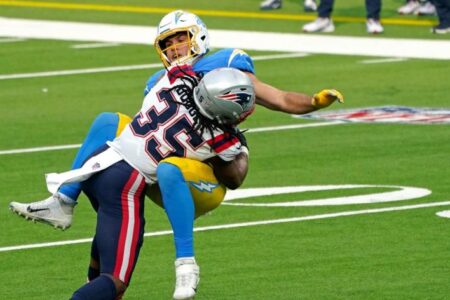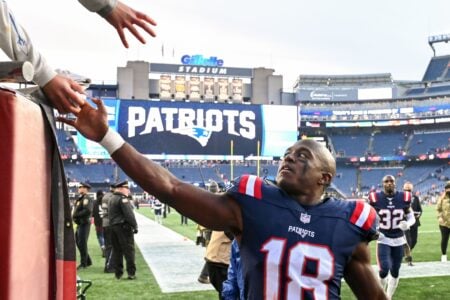- Joined
- Sep 13, 2004
- Messages
- 15,208
- Reaction score
- 12,977
The topic of risk seems to be dominating the OLB discussion right now, and I thought it deserved its own topic apart from the merits of any particular player. The typical debate is "high ceiling vs. low floor": is it better to swing for the fences and pick a player with extraordinary potential but significant bust risk, or to take a proven quantity who's more certain to be a contributor, but less likely to be a star?
My thought of the moment is that it depends on the specific strategic circumstances of an individual draft, and that the Patriots are set up to aim for high ceilings this year more than last year.
First off, there's a big difference in the risk inherent in picking #7 vs. #23. Last year's #7 signed a contract worth 3 1/2 times the #23. Next, there's the fact that the Pats pick again just 11 slots later, then 13 slots after that, then 11 again. IOW their basket of picks is structured to mitigate risk, allowing room for a couple of Hail Marys along the way. The draft is dense in talent along the way, further de-emphasizing any one pick. Finally, there's the fact that the Pats have constructed their roster to minimize reliance on rookies in 2009. Again, that suggests patience for greener players with high potential.
For most teams and in most years, there's more pressure on hitting that #1 pick. But this year, I think it's a mistake to think of the #23 as an island apart from the picks that follow, or to assume that minimizing risk is a round-1 essential.
If you made your way through all that, any thoughts?
My thought of the moment is that it depends on the specific strategic circumstances of an individual draft, and that the Patriots are set up to aim for high ceilings this year more than last year.
First off, there's a big difference in the risk inherent in picking #7 vs. #23. Last year's #7 signed a contract worth 3 1/2 times the #23. Next, there's the fact that the Pats pick again just 11 slots later, then 13 slots after that, then 11 again. IOW their basket of picks is structured to mitigate risk, allowing room for a couple of Hail Marys along the way. The draft is dense in talent along the way, further de-emphasizing any one pick. Finally, there's the fact that the Pats have constructed their roster to minimize reliance on rookies in 2009. Again, that suggests patience for greener players with high potential.
For most teams and in most years, there's more pressure on hitting that #1 pick. But this year, I think it's a mistake to think of the #23 as an island apart from the picks that follow, or to assume that minimizing risk is a round-1 essential.
If you made your way through all that, any thoughts?


















